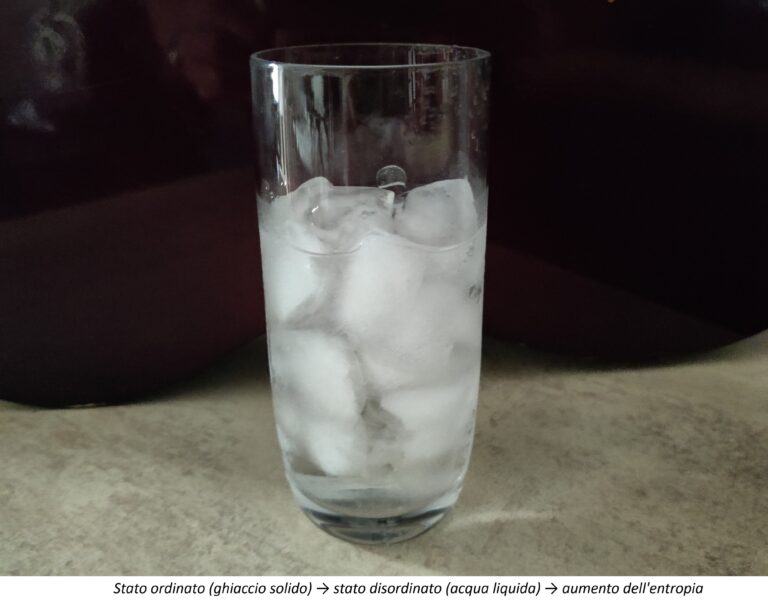OLAP Functions in SQL iSeries for Advanced Data Analysis: A Focus on Miscellaneous Functions

Introduction
In the realm of data analysis and management, the ability to efficiently aggregate, interpret, and present data is paramount.
The IBM iSeries (AS/400) platform, known for its robustness and reliability in handling enterprise-level data processing needs, offers a suite of SQL functionalities designed to support complex analytical tasks.
Among these capabilities, OLAP (Online Analytical Processing) functions stand out for their ability to facilitate advanced data manipulation and insight extraction directly from SQL queries. This post focuses on two critical, yet often underutilized, Miscellaneous OLAP Functions within the iSeries SQL toolkit: LISTAGG() and GROUPING().
LISTAGG() Function: At its core, LISTAGG() serves as a powerful tool for data aggregation, particularly in scenarios requiring the concatenation of string data across multiple rows into a single row.
This function is invaluable for generating comprehensive summaries, reports, or any data presentation format where consolidating textual information from various records is necessary.
By allowing for custom separators between concatenated values, LISTAGG() offers flexibility in data presentation, making it an essential tool for data analysts looking to enhance their reporting capabilities.
GROUPING() Function: The GROUPING() function plays a pivotal role in distinguishing between regular and super-aggregate rows within a result set. This distinction is crucial when working with grouped data, as it enables analysts to identify whether a specific row in an aggregate query result is part of the original data grouping or a result of further aggregation.
The use of GROUPING() is particularly beneficial in complex reporting and data analysis scenarios where understanding the hierarchy and structure of aggregated data is necessary for accurate interpretation and decision-making.
The iSeries SQL platform’s inclusion of OLAP functions like LISTAGG() and GROUPING() significantly enhances data manipulation capabilities, paving the way for innovative data presentations and deeper insights.
As businesses continue to navigate an increasingly data-driven world, leveraging these functions can provide a competitive edge in data analysis and decision-making processes. This post aims to demystify these functions and encourage their adoption in your data analytical practices, ensuring you fully leverage the iSeries SQL’s capabilities to meet your data processing and reporting needs.

Examples of OLAP Function LISTAGG()
Introduction to the scenario
Let’s suppose we have a dataset (SalesData) representing sales achievements across various macro-areas and regions, focusing on products that have exceeded sales targets. This dataset serves as the basis for two insightful queries, each designed to aggregate and present the data in a manner that highlights different aspects of the sales achievements.
| MACROAREA | REGION | PRODUCT |
| America | North America | P_011 |
| America | North America | P_035 |
| America | Central America | P_021 |
| America | Central America | P_027 |
| America | Central America | P_019 |
| America | South America | P_027 |
| Asia | Western Asia | P_005 |
| Asia | Western Asia | P_027 |
| Asia | Eastern Asia | P_038 |
| Asia | Eastern Asia | P_016 |
| Asia | Eastern Asia | P_040 |
| Asia | Southtern Asia | P_044 |
| Asia | Southtern Asia | P_021 |
| Asia | Southtern Asia | P_038 |
| Europe | Northern Europe | P_019 |
| Europe | Northern Europe | P_035 |
| Europe | Northern Europe | P_021 |
| Europe | Western Europe | P_027 |
| Europe | Western Europe | P_021 |
| Europe | Western Europe | P_009 |
| Europe | Eastern Europe | P_021 |
| Europe | Eastern Europe | P_009 |
This dataset serves as the basis for two insightful queries, each designed to aggregate and present the data in a manner that highlights different aspects of the sales achievements.
Query 1: Aggregated Product Lists by Region
This query aims to provide a concise overview of product performance by region, offering businesses a clear perspective on which products have surpassed sales expectations in specific geographic areas. By executing the query we obtain a list organized by region, with each entry featuring a consolidated list of products that have achieved notable sales success within that region. This aggregation is valuable for regional sales managers and marketing teams, enabling them to identify successful products and tailor strategies accordingly.
Practical Applications:
- Regional Performance Analysis: Understand which products are performing well in specific regions to allocate marketing resources more effectively.
- Inventory and Supply Chain Optimization: Adjust inventory levels and distribution plans based on regional sales performance trends.
WITH
SalesData (MacroArea, Region, Product) AS (
VALUES ('America', 'North America' , 'P_011')
, ('America', 'North America' , 'P_035')
, ('America', 'Central America' , 'P_021')
, ('America', 'Central America' , 'P_027')
, ('America', 'Central America' , 'P_019')
, ('America', 'South America' , 'P_027')
, ('Asia' , 'Western Asia' , 'P_005')
, ('Asia' , 'Western Asia' , 'P_027')
, ('Asia' , 'Eastern Asia' , 'P_038')
, ('Asia' , 'Eastern Asia' , 'P_016')
, ('Asia' , 'Eastern Asia' , 'P_040')
, ('Asia' , 'Southtern Asia' , 'P_044')
, ('Asia' , 'Southtern Asia' , 'P_021')
, ('Asia' , 'Southtern Asia' , 'P_038')
, ('Europe' , 'Northern Europe' , 'P_019')
, ('Europe' , 'Northern Europe' , 'P_035')
, ('Europe' , 'Northern Europe' , 'P_021')
, ('Europe' , 'Western Europe' , 'P_027')
, ('Europe' , 'Western Europe' , 'P_021')
, ('Europe' , 'Western Europe' , 'P_009')
, ('Europe' , 'Eastern Europe' , 'P_021')
, ('Europe' , 'Eastern Europe' , 'P_009')
)
, PL (Region, ProductsList) AS (
SELECT Region,
LISTAGG(Product, ', ')
WITHIN GROUP (ORDER BY Product) AS ProductsList
FROM SalesData
GROUP BY Region
ORDER BY Region
)
select * from PL;
Result
| REGION | PRODUCTSLIST |
| Central America | P_019, P_021, P_027 |
| Eastern Asia | P_016, P_038, P_040 |
| Eastern Europe | P_009, P_021 |
| North America | P_011, P_035 |
| Northern Europe | P_019, P_021, P_035 |
| South America | P_027 |
| Southtern Asia | P_021, P_038, P_044 |
| Western Asia | P_005, P_027 |
| Western Europe | P_009, P_021, P_027 |
Detailed Description of the query
The SQL query is a well-structured query utilizing a Common Table Expression (CTE) for organizing and aggregating sales data within an IBM iSeries environment. This particular query is designed to consolidate and display the list of products that have exceeded sales targets, grouped by region. Below is a detailed and technical description of the query:
Common Table Expressions (CTEs)
SalesData CTE
The SalesData CTE is created using a VALUES clause to manually define a set of rows that simulate a table with three columns: MacroArea, Region, and Product. Each row represents a product that has exceeded sales targets in a specific region within a macro area.
PL (ProductsList) CTE
Following the SalesData CTE, the PL CTE is used to create a list of products aggregated by the Region column. This is achieved using the LISTAGG function, an OLAP function that concatenates values from multiple rows into a single string with a specified delimiter, in this case, a comma (, ).
LISTAGG Function
The LISTAGG function in this context takes two arguments:
- Product: The column containing the values to concatenate.
- ‘, ‘: The string literal defining the delimiter to separate the concatenated values.
The WITHIN GROUP clause specifies the order in which the Product values should be concatenated, ordered by the Product column itself.
GROUP BY Clause
The GROUP BY clause is applied to the Region column, which ensures that the LISTAGG function concatenates Product values for each unique region into a single string, thereby creating a distinct list of products for each region.
ORDER BY Clause
After grouping and aggregation, the ORDER BY clause is applied to the Region column, which dictates that the output of the query will be sorted by the region in ascending order.
Final SELECT Statement
Finally, the select * from PL; statement executes the PL CTE, resulting in a retrieved list of records from the PL virtual table, which now contains two columns: Region and ProductsList. Each row in the result set represents a unique region along with a string that lists all the products for that region, aggregated and ordered as per the LISTAGG specification.
This output is particularly useful for quick reference and reporting purposes, as it clearly displays the performance of products within specific regional markets.

Query 2: Aggregated Region Lists by Product
Conversely, the second query shifts the focus to individual products, aggregating the regions where each product has exceeded sales targets. This perspective is particularly useful for product managers and strategic planners, as it identifies the geographic breadth of a product’s market appeal and success.
Practical Applications:
- Product Development and Innovation: Insights into where products are successful can guide product improvement and new product development efforts.
- Market Expansion Strategies: Identifying products with wide geographic appeal can inform strategies for market penetration and expansion.
WITH
SalesData (MacroArea, Region, Product) AS (
. . . .
. . . . (as above)
. . . .
)
, RL (Product, RegionsList) AS (
SELECT Product,
LISTAGG(Region, ', ')
WITHIN GROUP (ORDER BY Region) AS RegionsList
FROM SalesData
GROUP BY Product
ORDER BY Product
)
select * from RL;
Result
| PRODUCT | REGIONSLIST |
| P_005 | Western Asia |
| P_009 | Eastern Europe, Western Europe |
| P_011 | North America |
| P_016 | Eastern Asia |
| P_019 | Central America, Northern Europe |
| P_021 | Central America, Eastern Europe, Northern Europe, Southtern Asia, Western Europe |
| P_027 | Central America, South America, Western Asia, Western Europe |
| P_035 | North America, Northern Europe |
| P_038 | Eastern Asia, Southtern Asia |
| P_040 | Eastern Asia |
| P_044 | Southtern Asia |
Detailed Description of the Query
The SQL query provided is structured to utilize a Common Table Expression (CTE) to organize and then query sales data within an IBM iSeries environment. This query specifically aims to aggregate the data to show which regions each product has been successful in, based on exceeding sales targets. Here’s a detailed and technical breakdown of the query:
Common Table Expressions (CTEs)
SalesData CTE
The SalesData CTE functions as a temporary result set that is defined within the execution scope of the larger SQL statement. This CTE is not shown in full in the provided image but is said to be as defined above, likely containing a predefined set of rows with columns: MacroArea, Region, and Product. Each row within this CTE represents a sales record where a particular product has exceeded its sales target within a specific region.
RL (RegionsList) CTE
The RL CTE is then defined to transform the SalesData by aggregating regions associated with each product. The transformation is executed by the LISTAGG function.
LISTAGG Function
The LISTAGG function is an OLAP function used here to concatenate the Region values from multiple rows into a single string for each product. It takes the following parameters:
- Region: The column whose values are to be concatenated.
- ‘, ‘: The delimiter used to separate the concatenated values, which in this case is a comma followed by a space.
The WITHIN GROUP clause is included to order the Region values before concatenation, determined by the ORDER BY Region clause within it.
GROUP BY Clause
The GROUP BY Product clause is critical as it specifies that the aggregation done by LISTAGG should be performed on rows with the same Product value. As a result, each unique product will have a corresponding list of regions where it has exceeded sales targets.
ORDER BY Clause
The ORDER BY Product clause ensures that the final output of the RL CTE is sorted based on the Product column in ascending order.
Final SELECT Statement
The final statement select * from RL; executes the query using the RL CTE, and the result is a list of products, each accompanied by a string that consolidates all regions where that product has exceeded sales targets. The regions in the string are ordered as specified by the WITHIN GROUP clause.
This output format is particularly beneficial for stakeholders who need a compact representation of market penetration and success for each product across different regions. It aids in strategic decision-making related to marketing, product distribution, and resource allocation.

Hierarchical Sales Data Aggregation with OLAP Functions in iSeries SQL
Introduction to the Query
In this example, we will explore the advanced use of OLAP functions in SQL, specifically on an iSeries system, to analyze and aggregate sales data across different geographical levels. Our focus is to demonstrate how to effectively summarize sales amounts while providing insights into both regional and country-level sales performance.
By utilizing the GROUPING SETS along with the GROUPING function, we aim to enhance the data presentation, allowing for a hierarchical view that reveals both detailed and consolidated sales figures.
This approach is particularly useful for multi-dimensional analysis, offering a clear understanding of sales distribution across varying granularities within the organizational hierarchy.
WITH SalesData (MacroArea, Region, Country, Amount) AS (
VALUES ('America', 'North America' , 'Country_NA1', 180000)
, ('America', 'North America' , 'Country_NA2', 80000)
, ('America', 'North America' , 'Country_NA3', 60000)
, ('America', 'Central America' , 'Country_CA1', 30000)
, ('America', 'Central America' , 'Country_CA2', 40000)
, ('America', 'South America' , 'Country_SA1', 65000)
, ('America', 'South America' , 'Country_SA2', 73000)
, ('Europe' , 'Northern Europe' , 'Country_NE1', 44000)
, ('Europe' , 'Northern Europe' , 'Country_NE2', 58000)
, ('Europe' , 'Northern Europe' , 'Country_NE3', 43000)
, ('Europe' , 'Western Europe' , 'Country_WE1', 27000)
, ('Europe' , 'Western Europe' , 'Country_WE2', 32000)
, ('Europe' , 'Western Europe' , 'Country_WE3', 63000)
, ('Europe' , 'Western Europe' , 'Country_WE4', 19000)
, ('Europe' , 'Eastern Europe' , 'Country_EE1', 15000)
, ('Europe' , 'Eastern Europe' , 'Country_EE2', 48000)
, ('Europe' , 'Eastern Europe' , 'Country_EE3', 56000)
) -- select * from SalesData;
SELECT
Region,
Country,
SUM(Amount) AS TotalSales,
GROUPING(Region) AS RegionGrouping,
GROUPING(Country) AS CountryGrouping
FROM SalesData
GROUP BY GROUPING SETS ((Region, Country), (Region), ())
ORDER BY GROUPING(Region), GROUPING(Country), Region, Country;
Result
| REGION | COUNTRY | TOTALSALES | REGIONGROUPING | COUNTRYGROUPING |
| Central America | Country_CA1 | 30.000 | 0 | 0 |
| Central America | Country_CA2 | 40.000 | 0 | 0 |
| Eastern Europe | Country_EE1 | 15.000 | 0 | 0 |
| Eastern Europe | Country_EE2 | 48.000 | 0 | 0 |
| Eastern Europe | Country_EE3 | 56.000 | 0 | 0 |
| North America | Country_NA1 | 180.000 | 0 | 0 |
| North America | Country_NA2 | 80.000 | 0 | 0 |
| North America | Country_NA3 | 60.000 | 0 | 0 |
| Northern Europe | Country_NE1 | 44.000 | 0 | 0 |
| Northern Europe | Country_NE2 | 58.000 | 0 | 0 |
| Northern Europe | Country_NE3 | 43.000 | 0 | 0 |
| South America | Country_SA1 | 65.000 | 0 | 0 |
| South America | Country_SA2 | 73.000 | 0 | 0 |
| Western Europe | Country_WE1 | 27.000 | 0 | 0 |
| Western Europe | Country_WE2 | 32.000 | 0 | 0 |
| Western Europe | Country_WE3 | 63.000 | 0 | 0 |
| Western Europe | Country_WE4 | 19.000 | 0 | 0 |
| Central America | [NULL] | 70.000 | 0 | 1 |
| Eastern Europe | [NULL] | 119.000 | 0 | 1 |
| North America | [NULL] | 320.000 | 0 | 1 |
| Northern Europe | [NULL] | 145.000 | 0 | 1 |
| South America | [NULL] | 138.000 | 0 | 1 |
| Western Europe | [NULL] | 141.000 | 0 | 1 |
| [NULL] | [NULL] | 933.000 | 1 | 1 |
Detailed Technical Description of the Query
The SQL statement provided is a sophisticated query that employs the concept of Common Table Expressions (CTEs) and the powerful grouping functions available in SQL to perform advanced data aggregation and analysis.
Common Table Expression: SalesData
The SalesData CTE is constructed to simulate a sales dataset that includes the columns MacroArea, Region, Country, and Amount. This dataset is populated with hardcoded values representing sales figures for various countries within different regions and macro-areas.
Final SELECT Statement
The final SELECT statement is designed to extract and aggregate this data to provide total sales figures while also using OLAP functionalities to distinguish between different levels of data summarization.
- Region, Country: The columns selected that will be displayed in the final result set.
- SUM(Amount) AS TotalSales: This calculates the total sales for each grouping set defined. It sums up the Amount column and aliases it as TotalSales.
- GROUPING(Region) AS RegionGrouping, GROUPING(Country) AS CountryGrouping: These columns use the GROUPING function to indicate the level of aggregation for each row. The GROUPING function returns 1 if the row is an aggregate or a super-aggregate result (such as a subtotal or total), and 0 if it is not. The results are aliased as RegionGrouping and CountryGrouping respectively.
GROUP BY GROUPING SETS Clause
The GROUP BY GROUPING SETS clause is the crux of this query’s multi-level aggregation capability. It specifies multiple levels of grouping in one query, which in this case are:
- (Region, Country): The most detailed level of aggregation, providing sales figures for each country within each region.
- (Region): A higher level of aggregation, giving subtotals of sales for each region.
- (): The highest level of aggregation, giving the grand total of sales across all regions and countries.
ORDER BY Clause
The ORDER BY clause specifies the order of the
result set and is particularly important when using GROUPING SETS. It ensures that the aggregated results appear in a logical and hierarchical order. This clause is ordering the results primarily by the GROUPING functions applied to Region and Country, ensuring that the total aggregates appear last in the result set. Then it orders by Region and Country to maintain an alphabetical or logical sequence within the grouped data.
The GROUPING function within the ORDER BY clause ensures that the results are sorted in a way that respects the hierarchy of the aggregation:
- First, the detailed rows where both Region and Country are grouped (indicated by GROUPING(Region) and GROUPING(Country) both returning 0.
- Next, the subtotal rows where only Region is grouped (indicated by GROUPING(Region) returning 0 and GROUPING(Country) returning 1.
- Finally, the grand total row where both Region and Country are super-aggregated (indicated by GROUPING(Region) and GROUPING(Country) both returning 1.
This ordering ensures that any consumers of the query’s results can easily discern the level of detail they are looking at: detailed figures, subtotals, or grand totals.
The query effectively demonstrates how to use advanced SQL features to analyze and present data in a hierarchical format that is common in financial and sales reporting. It provides a clear example of how to summarize data at multiple levels of detail in a single query, which can be invaluable for business intelligence, reporting, and decision-making processes.
Conclusions
In summary, the strategic implementation of OLAP functions such as LISTAGG() and GROUPING() within an iSeries SQL environment offers a robust solution for hierarchical data analysis and presentation. The use of these functions in our query facilitates a multi-tiered aggregation of sales data, permitting a comprehensive view that spans from granular details to high-level summaries.
This methodology not only streamlines the data analysis process but also enhances decision-making by providing clear insights into sales performance across different geographical segments. By leveraging the power of these OLAP functions, organizations can transform raw data into actionable intelligence, reinforcing the critical role of sophisticated data handling in driving business strategy and outcomes.
Please note, as always, that actual implementation and functionality may vary depending on the version of the iSeries operating system and DB2 database. It is always good practice to refer to the official IBM documentation for more precise and detailed information.
Useful References
- Data Science: opportunities and face challenges
- OLAP Functions in Data Science: A Modern Approach to Business Intelligence
- Harnessing the Power of Data Science and SQL with OLAP Functions on IBM iSeries
- OLAP Functions in iSeries SQL for Advanced Data Analysis: A Focus on Window Functions
- OLAP Functions in SQL iSeries for Advanced Data Analysis: A Focus on Ranking Functions
- OLAP Functions in SQL iSeries for Advanced Data Analysis: A Focus on Grouping Operations





